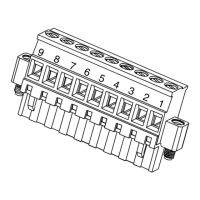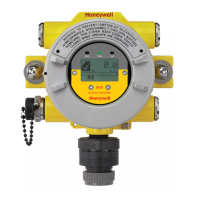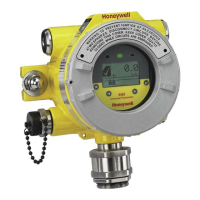XNX Universal Transmitter Quick Start Guide
59
9.3ECSensorPerformanceData,DEKRAEXAMVeried
Gas
Cartridge
P/N
Selectable Full
Scale Range
(Display and
4-20mA Full
Scale)
Default
Range
Range
Incre-
ments
Lower
Alarm
Limit
Lower
Detec-
tion
Limit
Zero
Variation
Selectable
Cal Gas
Range
Default
Cal
Point
Re-
sponse
Time
(T50)
(sec)
T90
Response
T10 Recov-
ery Time
(sec)
Accuracy
1
Operating Temperature
Operating
Humidity
Min Max Min RH
Max
RH
O
2
Oxygen XNXXSO1SS n/a 25.0 %Vol n/a 5.0%Vol 3.5 %Vol n/a
20.9 %Vol
(fixed)
20.9 %Vol T20 <10 <30 <+/-0.6 %Vol -30°C / -34°F 55°C /131°F 15% 90%
H
2
S Hydrogen Sulfide XNXXSH1SS 10.0 to 50.0 ppm 15.0 ppm 0.1ppm 3.0 ppm 1.0 ppm 2.0 ppm
30 to 70%
of the
selected
full scale
range
10 ppm <20 <30 <+/-0.3 ppm -40°C / -40°F 55°C / 131°F 15% 90%
H
2
S (High) Hydrogen Sulfide XNXXSH2SS 50 to 500 ppm 100 ppm 10 ppm 5 ppm 1 ppm 2 ppm 50 ppm <20 <30 <+/-5 ppm -40°C / -40°F 55°C / 131°F 15% 90%
CO
Carbon
Monoxide
XNXXSC1SS 100 to 500 ppm 300 ppm 100 ppm 15 ppm 5 ppm 10 ppm 100 ppm <15 <30 <+/-2 ppm -40°C / -40°F 55°C / 131°F 15% 90%
Footnote:
1. Accuracy of reading at default Alarm 1 concentration (typically 10% FS or defined minimum alarm level setting, whichever is greater) when operated at default full scale.
Note:
• Sensor drift between LDL and negative drift fault limits (typcially > negative zero variation) appear as 0 on the display and outputs of the device.
• Long-term drift: XNXXSC1SS <5%/year, XNXXSO1SS <4%/year, XNXXSH1SS and XNXXSH2SS <2%/month. Performance gures are measured by test units calibrated at 50% of
full scale, at ambient conditions of 20°C, 50% RH, with the EC weatherproof cover attached.
• Operating the XNX EC sensor at extended temperature ranges for a prolonged time period exceeding 12 hours may cause deterioration in sensor performance and shorten sensor
life. Extended temperature ranges for XNX EC sensor cartridges are -40°C to -20°C.
• Barometric pressure effects on the O
2
sensor: The output from the O
2
sensor has pressure effects of <0.1% change of output per % change in pressure. When the barometric
pressure changes by ±20%, the output from the O
2
sensor changes <±0.4%Vol. However, the oxygen sensor shows transient behavior when subjected to a rapid change in ambient
pressure due to either weather or altitude. For example, a 10KPa instantaneous positive pressure step change may cause an overscale alarm condition for a period of about 12
seconds.
• Response times may increase at lower temperatures.
• Contact Honeywell Analytics for any additional data or details.

